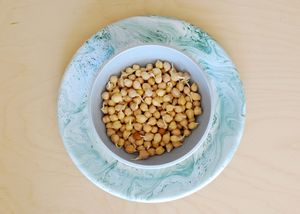Sprouts are activated and alive. As Paul Pitchford notes in Healing with Whole Foods, 'sprouts represent the point of greatest vitality in the life cycle of a plant. One clearly experiences this vitality when eating sprouts consistently.' The sprouting process 'predigests the nutrients . . . making [them] easier to assimilate and metabolize'. In a nutshell: they're easier to digest than their pre-sprouted counterparts and, depending on how long you let them sprout for, are also a great way to get some extra greens in your diet during the winter months.
Sprouts became one of my staples when I was on the Hypoallergenic Diet. I popped them on top of hummus-smeared rice crackers and mixed them into salads. My favourites are alfalfa, chickpeas (which I then often turn into sprouted hummus; recipe to follow soon) and lentils. Mung beans are also great in Asian dishes.
Although he raves about the many benefits of sprouts, Pitchford also warns that the process 'increases the cooling attributes . . . which can weaken digestion in those with low "digestive fire". If someone tends toward loose stools, he says, sprouts must be eaten sparingly, or cooked before consuming.
This recipe is based on the one in Healing with Whole Foods. All measurements given produce four cups of ready-to-eat sprouts. I often make smaller amounts to make sure I can eat them all before they go bad, which is usually after a week or so if kept in a plastic bag or covered glass jar.
